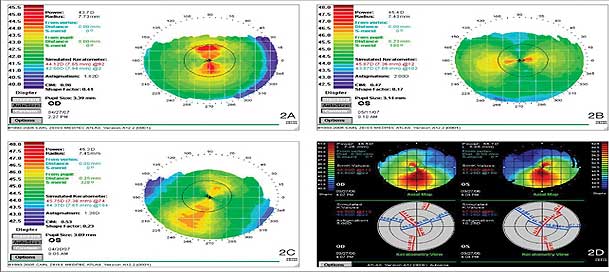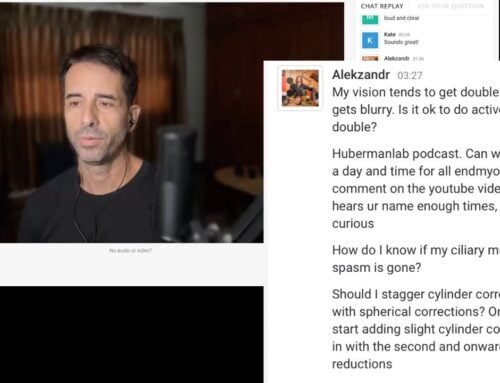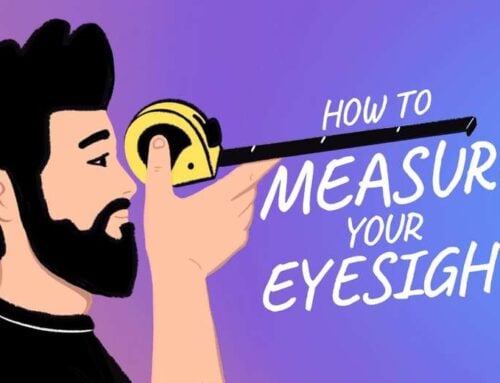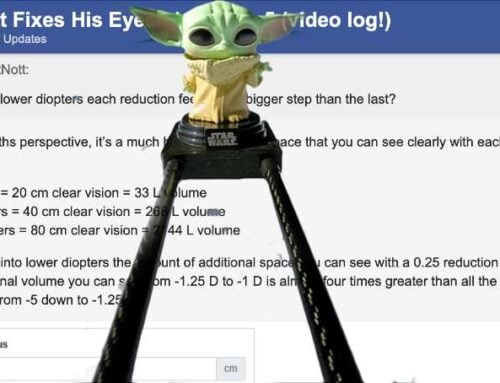There’s a recent thread in the forum where I spent quite a bit of time answering some questions that tend to come up a lot. It’s relevant for just about anyone starting out with healthier prescription management, and a good primer if you need some pointers.
I really do need to get a good FAQ for this aspect. The blog format isn’t entirely ideal to keep key topics from disappearing into the archives!
Brandon asks in the forum:
I just started the web program and am on day 2. I’m 24 and have had glasses for about a decade now. I want to order glasses for close/computer work, as I’m studying to be a programmer and screen time takes up a large part of my day. The part that confuses me is my prescription, one eye is significantly clearer than the other. I went to the optometrist a few days ago, and he told me my prescription is
OD: -3.75 – 2.00 – 007
OS: -2.00 – 1.75 – 165
PD 57
When I look at the computer screen without glasses, my left eye has only a little blur, but my right eye only makes out colors and shapes, words blob together.
Any suggestions on what I should lower the power to?”
***
In situations like this in particular, where you have so much astigmatism correction, and such a big difference between left and right eye, it’s best to take a big step back from the prescription numbers.
You want to do some centimeter measurements, and start from those results, rather than counting backwards from your existing prescription.
After Brandon posted his centimeter results (see the full thread), I made the following suggestions:
So here are our limitations – without a test lens kit, the first round of prescription glasses are a bit of a guess (though even with, we still have the unknown of how your eyes respond to a bit of a prescription adjustment).
We start the course with close-up. There are a few reasons for this, primarily since we first want to sort out the root cause of myopia, the close-up strain. Also, this is where most of us spend most of our time, so it makes most sense to deal with the close-up first.
You notice we don’t talk about distance prescriptions for the first four weeks. We start right away with the differential (close-up) prescription, since we want to get away from a full correction during close-up viewing as quickly as possible. The four weeks gives us some time to see how your eyes respond to the reduced prescription. Then we have a base line (and your experience from these four weeks with measuring centimeters). We use this to determine a good normalized (reduced distance) prescription.
For close-up we don’t need (or want) the astigmatism correction at all. In your case right from the start, we can do a whole lot of reducing the prescription complexity – quite likely your eyes will be happy about this, and you will notice the difference in how you feel after hours of close-up time.
A good starting point may be: L -1.50 (spherical only) and R -2.50.
That’s a whole lot of change from what you are used to, and a bit on the challenging side as well. Depending on your comfortable viewing distance, you could go with -1.75/-2.75 (if you like to be further from your screen).
When you get them, you will want to do centimeter measurements with the glasses, and check them at least a few times per week. You don’t want to wear the full correction at all for close-up. It will be interesting to see what the centimeter looks like there, and how it evolves over a few weeks.
It’s less correction and less complexity, and in line with your centimeter results. There is no downside to that, other than the very significant change from what you are used to – best to start this on a weekend or a time where you have a few days of less close-up need and more opportunities to get away from computer screens after an hour or two.”
***
A test lens kit is a great asset, once you are sure you will stick with your vision improvement project (and relevant more so if you have higher myopia, or a complex current prescription). One of these days I will get around to creating a resource page to provide more pointers on where to get prescriptions online in various countries, and what else may be worth investing in.
All that said though, you can accomplish everything here with a 50 cent tape measure and some patience. Once you spent a few months working towards better habits, most of this comes to you like second nature.
Enjoy!



















